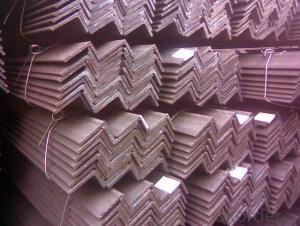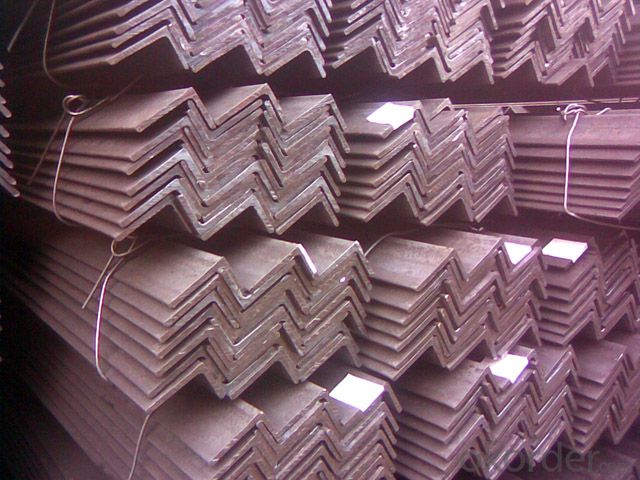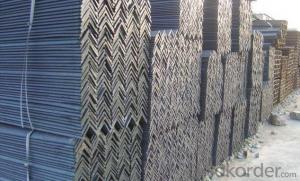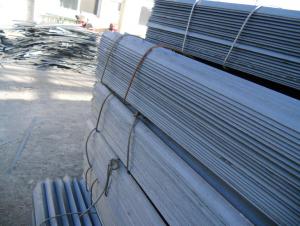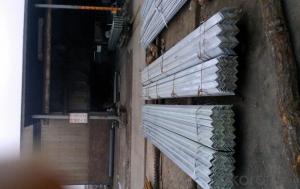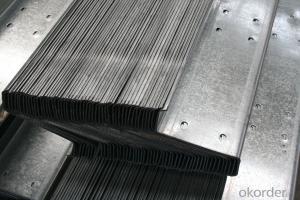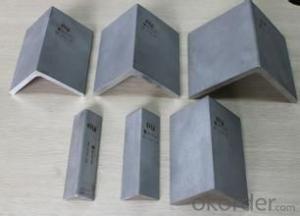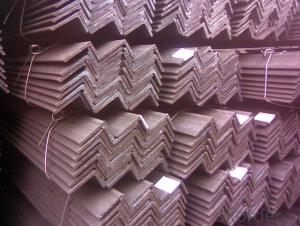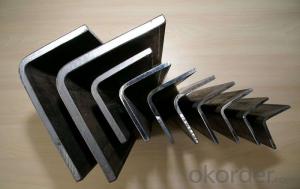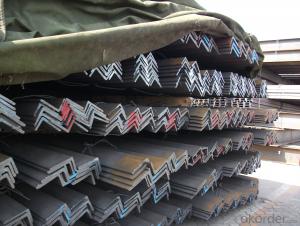Unequal Galvanized Angle Steel 65*65*6mm ASTM/A36/ SS540
- Loading Port:
- Tianjin
- Payment Terms:
- TT or LC
- Min Order Qty:
- 30 m.t.
- Supply Capability:
- 40000 m.t./month
OKorder Service Pledge
OKorder Financial Service
You Might Also Like
Product Description:
OKorder is offering Unequal Galvanized Angle Steel 65*65*6mm ASTM/A36/ SS540 at great prices with worldwide shipping. Our supplier is a world-class manufacturer of steel, with our products utilized the world over. OKorder annually supplies products to European, North American and Asian markets. We provide quotations within 24 hours of receiving an inquiry and guarantee competitive prices.
Product Applications:
Unequal Galvanized Angle Steel 65*65*6mm ASTM/A36/ SS540 are ideal for structural applications and are widely used in the construction of buildings and bridges, and the manufacturing, petrochemical, and transportation industries.
Product Advantages:
OKorder's Unequal Galvanized Angle Steel 65*65*6mm ASTM/A36/ SS540 are durable, strong, and resist corrosion.
Main Product Features:
· Premium quality
· Prompt delivery & seaworthy packing (30 days after receiving deposit)
· Corrosion resistance
· Can be recycled and reused
· Mill test certification
· Professional Service
· Competitive pricing
Product Specifications:
1.Variety:equal ,unequal
2.standard:GB/1220-92 AISI ASTM JIS DIN
3.Size: 20mm*20mm*3mm - 250mm*250mm*35mm
4.MOQ:50MT
5.Weight: theoretical weight or actual net weight at buyer's option
6.Mill: qualified Chinese steel mills
7.Packing: mill's standard packing
8.Payment: L/C, T/T
Grade | |||||||
| Q235/Q345/SS400/ST37-2/ST50/Q420/Q460 | |||||||
General Specification: | |||||||
Size (mm) | Weight (kg/m) | Size (mm) | Weight (kg/m) | Size (mm) | Weight (kg/m) | Size (mm) | Weight (kg/m) |
25*3 | 1.124 | 70*5 | 5.397 | 100*6 | 9.366 | 70*45*4 | 3.57 |
25*4 | 1.459 | 70*6 | 6.406 | 100*8 | 12.276 | 70*45*5 | 4.403 |
30*3 | 1.373 | 70*7 | 7.398 | 100*10 | 15.12 | 70*45*6 | 5.218 |
30*4 | 1.786 | 70*8 | 8.373 | 100*12 | 17.898 | 100*80*6 | 8.35 |
40*3 | 1.852 | 75*5 | 5.818 | 110*8 | 13.532 | 100*80*7 | 9.656 |
40*4 | 2.422 | 75*6 | 6.905 | 110*10 | 16.69 | 100*80*8 | 10.946 |
40*5 | 2.976 | 75*7 | 7.976 | 110*12 | 19.782 | 110*70*8 | 10.946 |
50*4 | 3.059 | 75*8 | 9.03 | 110*14 | 22.809 | 110*70*10 | 13.476 |
50*5 | 3.77 | 75*10 | 11.089 | 125*8 | 15.504 | 140*90*8 | 14.16 |
50*6 | 4.465 | 80*6 | 7.376 | 125*10 | 19.133 | 140*90*10 | 17.475 |
60*5 | 4.57 | 80*8 | 9.658 | 125*12 | 22.696 | 140*90*12 | 20.724 |
60*6 | 5.42 | 80*10 | 11.874 | 125*14 | 26.193 | 160*100*12 | 23.592 |
63*5 | 4.822 | 90*8 | 10.946 | 140*10 | 21.488 | 160*100*14 | 27.247 |
63*6 | 5.721 | 90*10 | 13.476 | 140*12 | 200*125*12 | 29.761 | |
63*8 | 7.469 | 90*12 | 15.94 | 200*125*14 | 34.436 | ||
FAQ:
Q1: Why buy Materials & Equipment from OKorder.com?
A1: All products offered byOKorder.com are carefully selected from China's most reliable manufacturing enterprises. Through its ISO certifications, OKorder.com adheres to the highest standards and a commitment to supply chain safety and customer satisfaction.
Q2: How do we guarantee the quality of our products?
A2: We have established an advanced quality management system which conducts strict quality tests at every step, from raw materials to the final product. At the same time, we provide extensive follow-up service assurances as required.
Q3: How soon can we receive the product after purchase?
A3: Within three days of placing an order, we will begin production. The specific shipping date is dependent upon international and government factors, but is typically 7 to 10 workdays.
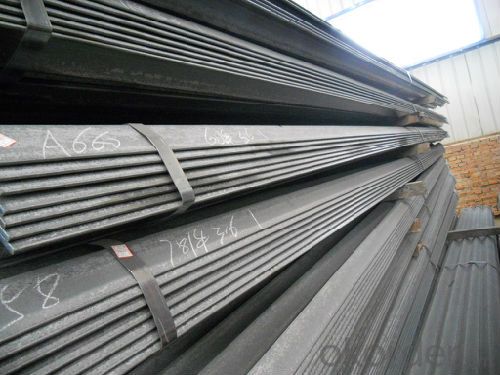
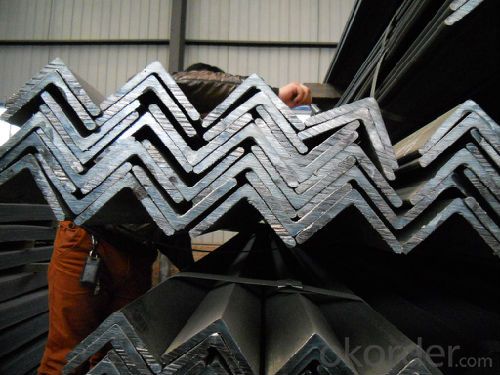
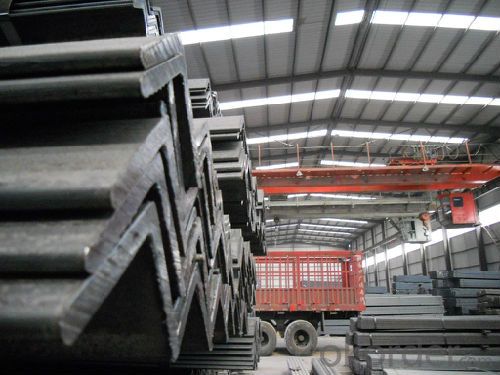
- Q: Can steel angles be used in marine applications?
- Yes, steel angles can be used in marine applications. Steel angles are commonly used in the construction of ships, offshore platforms, and other marine structures due to their high strength and durability. They provide structural support and help distribute the weight and stress of the marine environment. Steel angles are resistant to corrosion, especially when coated with protective coatings or galvanized. However, it is important to select the appropriate grade of steel angle that is specifically designed for marine applications to ensure optimal performance and longevity in harsh saltwater environments.
- Q: Can steel angles be used for manufacturing safety barriers?
- Yes, steel angles can be used for manufacturing safety barriers. Steel angles are commonly utilized due to their structural strength, durability, and ability to withstand impact. Their L-shape design allows for easy installation and provides stability, making them suitable for constructing safety barriers in various settings such as highways, construction sites, and industrial facilities.
- Q: Can steel angles be used in the construction of warehouses?
- Indeed, warehouses can utilize steel angles for their construction. Owing to their robustness and endurance, steel angles are frequently employed as structural elements in buildings and warehouses. They offer stability and bolster the entire structure, rendering them appropriate for diverse construction purposes. In the realm of warehouse construction, steel angles serve as framing components, columns, beams, and supports, contributing to the establishment of a sturdy and dependable edifice. Furthermore, steel angles exhibit adaptability and can be readily tailored and manufactured to satisfy precise design specifications, thus establishing their prominence as a favored option in warehouse construction ventures.
- Q: What's the size of No. 5 angle iron?
- Angle called angle, the steel strip is perpendicular to each other on both sides into the corner. There are equal angles and unequal angles. The two sides of an equal angle steel are equal in width.
- Q: How do you calculate the second moment of area for a steel angle?
- The second moment of area for a steel angle can be calculated by multiplying the width of the angle squared, multiplied by the thickness cubed, and divided by 12.
- Q: 304 what does angle iron stand for?
- 304 is a versatile stainless steel which is widely used in the manufacture of equipment and parts requiring good overall performance (corrosion resistance and formability). 304 stainless steel is a brand of stainless steel produced according to the ASTM standard in the United states. 304 chromium 19%, containing nickel 9%.
- Q: How do steel angles perform under dynamic or cyclic loading conditions?
- Steel angles are commonly used in structural applications where they are subjected to dynamic or cyclic loading conditions. Under such loading conditions, steel angles exhibit excellent performance due to their inherent properties. Firstly, steel angles possess high strength and stiffness, which enables them to withstand the varying loads and maintain their structural integrity. This ensures that the angles do not deform or fail prematurely under cyclic loading conditions. Furthermore, steel angles have good fatigue resistance, meaning they can endure repeated loading and unloading cycles without experiencing significant degradation in their mechanical properties. This is due to the material's ability to distribute and dissipate stress, preventing the accumulation of fatigue damage. Additionally, steel angles have the advantage of being able to absorb and distribute energy effectively. This helps in reducing the impact of dynamic loads, such as vibrations or sudden impacts, and prevents localized stress concentrations that could lead to failure. Moreover, steel angles have a high ductility, which allows them to undergo plastic deformation without fracturing. This characteristic is crucial in dynamic loading conditions as it enables the angles to absorb energy and undergo deformation, thereby dissipating the applied loads and reducing the risk of sudden failure. In conclusion, steel angles perform exceptionally well under dynamic or cyclic loading conditions. Their high strength, stiffness, fatigue resistance, energy absorption capacity, and ductility make them reliable and durable structural elements in various applications where they are subjected to dynamic or cyclic loads.
- Q: How do steel angles contribute to the stability of a structure?
- Steel angles contribute to the stability of a structure by providing additional strength and rigidity. They are commonly used to reinforce and support various components, such as beams and columns, by distributing the load and preventing buckling or bending. Their triangular shape allows for efficient weight distribution and helps resist lateral forces, enhancing the overall stability and structural integrity of the building.
- Q: Can steel angles be used as reinforcement in concrete structures?
- Yes, steel angles can be used as reinforcement in concrete structures. Steel angles are often used as L-shaped or angle-shaped bars that are embedded within the concrete to provide additional strength and support to the structure. These angles help to resist tensile forces and prevent cracking or failure of the concrete. They are commonly used in applications such as beams, columns, and walls to enhance the structural integrity and load-bearing capacity of the concrete elements. Additionally, steel angles can be easily welded or bolted together, making them a versatile and cost-effective choice for reinforcement in concrete structures.
- Q: How do steel angles contribute to architectural design?
- Architectural design relies heavily on steel angles due to their ability to offer both structural stability and design flexibility. These angled steel profiles are commonly utilized in various construction projects, including buildings, bridges, and other structures, to provide support and reinforcement. A significant advantage of steel angles in architectural design lies in their capacity to enhance the structural integrity of a building. By creating rigid connections between different structural elements, these angles add strength and stability to the overall structure, enabling it to withstand different loads and forces. This is especially crucial in high-rise buildings or structures situated in areas prone to earthquakes or strong winds. Furthermore, steel angles empower architects and designers to create distinctive and innovative architectural features. Their versatility allows for the development of aesthetically pleasing designs, such as cantilevered balconies, intricate facades, and unique rooflines. Due to their ability to be easily manipulated and welded, steel angles are well-suited for complex geometric shapes and creative design concepts. Moreover, steel angles offer cost-effective solutions in architectural design. They are readily available in various sizes and lengths, making them easily obtainable and integratable into construction projects. Their durability and low-maintenance properties make them a long-lasting and economical choice for architects, reducing the need for frequent repairs or replacements. Additionally, steel angles contribute to sustainability in architectural design. Steel is a highly recyclable material, and incorporating steel angles into construction projects reduces the demand for new materials. Additionally, the lightweight nature of steel angles allows for efficient transportation, reducing carbon emissions during the construction process. In conclusion, steel angles are indispensable in modern architectural design due to their ability to provide structural support, design flexibility, cost-effectiveness, and sustainability. Their usage not only enhances the overall strength and stability of a structure but also enables architects to create visually appealing and unique designs. With their numerous benefits, steel angles have become an integral element in contemporary architectural design.
Send your message to us
Unequal Galvanized Angle Steel 65*65*6mm ASTM/A36/ SS540
- Loading Port:
- Tianjin
- Payment Terms:
- TT or LC
- Min Order Qty:
- 30 m.t.
- Supply Capability:
- 40000 m.t./month
OKorder Service Pledge
OKorder Financial Service
Similar products
Hot products
Hot Searches
Related keywords
